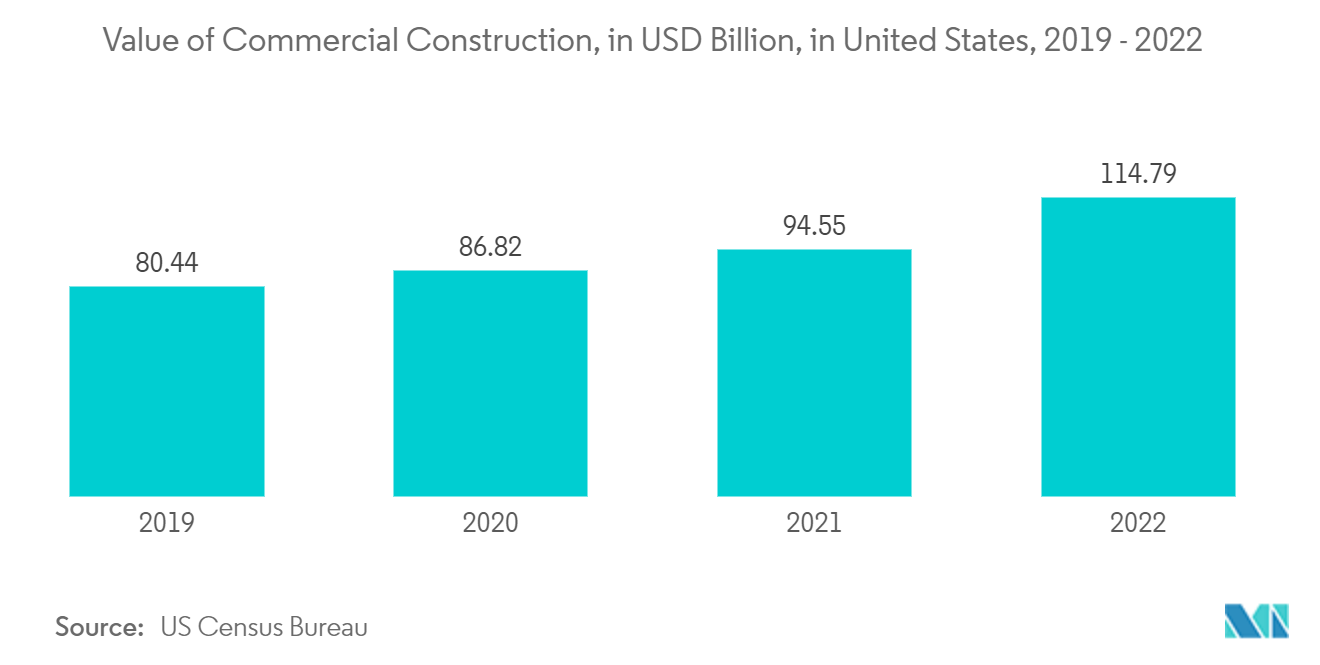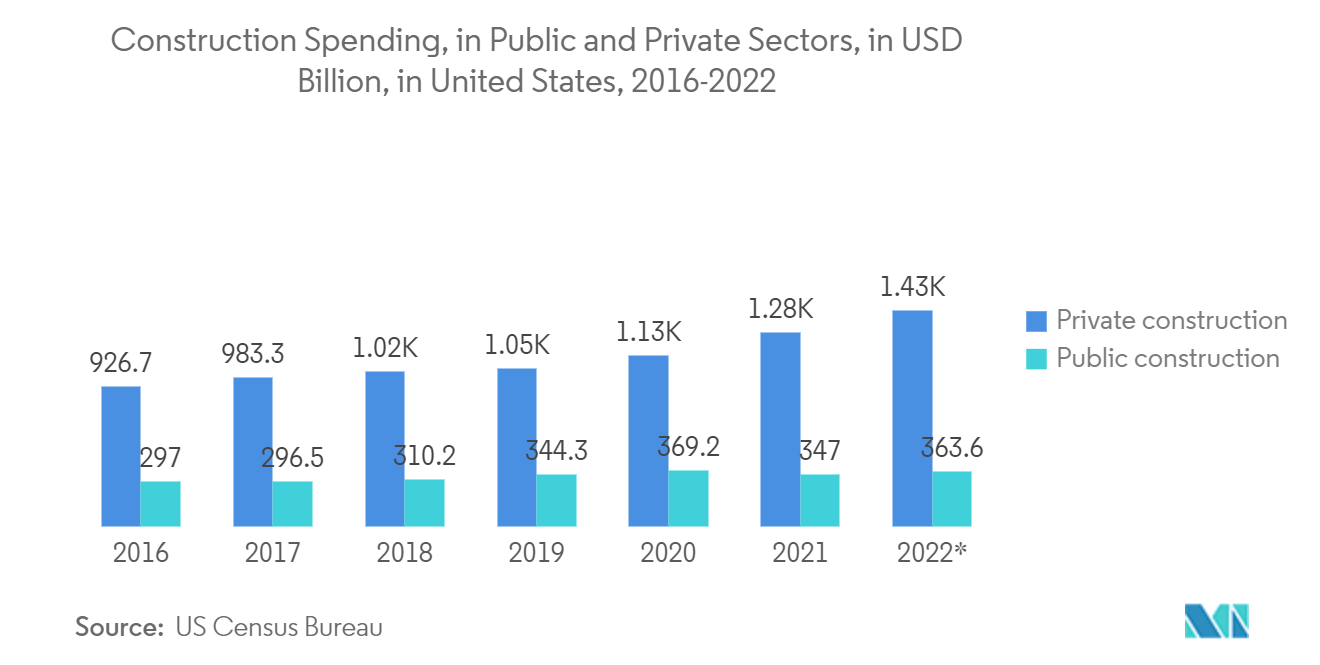Market Trends of NA Building Information Modelling Industry
Commercial Application Segment Holds Significant Market Share
- Commercial users of BIM in North America, such as contractors, are far more advanced in using BIM solutions than users in other parts of the world in the same segment. Investments in the commercial segment are majorly directed toward increasing the depth of use of BIM. Collaborations between software owners and the intended end users of the finalized design can achieve improved process outcomes and reduce errors and omissions.
- In North America, BIM is used in projects, especially institutional and government building projects. In Canada, the use of BIM is more in infrastructure projects.
- Commercial developers have enjoyed the benefits of the 3D visualization feature of BIM in their sales efforts by offering a detailed representation of the building before construction.
- This can be mutually advantageous to both customers and commercial establishments, as consumers can visualize the finished model of the building before construction. The commercial establishment can find takers much before the completion of the entire process.
- The North American region is experiencing rapid improvements and technological developments. Hence, many people have started shifting to metropolitan cities. The surging demand for enhanced infrastructure for commercial and personal requirements in urban areas would propel the BIM market growth in the upcoming years.

United States is Expected to Hold Major Market Share
- Businesses concentrating on the most recent technological advancements are expected to gain significantly from important market features such as a rapidly rising urban population and increased government investment across the United States.
- During the past several years, BIM has become an important tool in the engineering and construction sectors in the United States. It results from increased private investment in construction projects and the U.S. government's attempts to boost infrastructure development. Businesses specializing in developing information models require intelligent 3D model-based procedures linked with spatial information sciences.
- The GIS industry is increasingly being disrupted as it transitions to 3D modeling. The progression, which demonstrates the integration of GIS and BIM into a single holistic environment, demonstrates the shift the design and construction industry is going through as it moves from 2D to 3D BIM.
- Significant BIM vendors are located in this area, and BIM is frequently integrated with other trends, such as geographic information systems. Katerra, a California-based startup, has built an integrated platform that directly integrates BIM tools and computational design to its ERP global supply chain infrastructure to make ordering, manufacturing, tracking, and delivery of goods easier.
- According to U.S. Census Bureau, United States spending on private construction continued to grow last year and was nearly four times larger than construction spending in the public sector. Texas and California were at the top of the ranking when observing construction spending within the 50 U.S. states. According to a forecast, the value of United States construction put in place is expected to keep growing during the following years.


